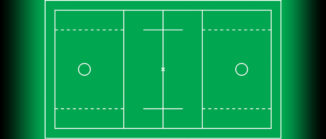
SPARKS, Md. — Women’s game rules representatives from the NCAA, NFHS and US Lacrosse have collaborated with industry representatives to simplify the stick stringing specifications for women’s collegiate, high school and girls’ youth play for the 2018 season.
The changes were made to address growing concerns around stick stringing in the women’s game. US Lacrosse and the NCAA receive multiple inquiries from coaches, officials, players, and parents at all level of the games requesting help with measurements and clarifications of legality.
Both manufacturers and officials reference the technical specifications for stick stringing in the Youth, NFHS/USL and NCAA rulebooks in order to ensure that players are not using sticks that may result in unsafe or unfair play. Traditionally, the technical specifications have focused on limiting pocket depth, release point of the ball, and ensuring that the ball could not get lodged within the stick head. These criteria are based on the safety needs of the women’s game. If the ball is difficult to dislodge by a normal checking motion or the speed of the ball out of the stick is greatly increased those would impact the safe play of the game.
Over time, the rule language, in its focus on the technical criteria for stick stringing, has become highly detailed and subsequently, stick stringing has become very difficult for officials to consistently enforce. Officials at all levels of play in the women’s game have significant responsibilities associated with maintaining safe play, and the measuring and testing of sticks before and during games in order to ensure consistent enforcement and to ensure that are legal for play has become overly burdensome. The technical requirements have also created unnecessary confusion in the marketplace for players, particularly those who just entering the sport and looking to find sticks that they can buy inexpensively off the shelves, and use without requiring significant modifications before becoming legal or functional on the field.
The technical details have been replaced by performance criteria aimed to focus on function, while maintaining a basis for ensuring safe play.
While many of the technical specifications for stringing have evolved in the new rules, two requirements remain constant, pocket depth and shooting string parameters. The safe play of the women’s game is the ultimate priority for rules and consequently these two components were not changed. Based on studies and dialogue with manufacturers, these two pieces were identified as critical to maintain comparable speed and grip on the ball under the new regulations.
“Ultimately, the traditionally strung women’s stick will remain dominant in the women’s game; but we also believe that as the game grows across the country and more and more young girls are picking up sticks to play, we need specifications that allow for off-the-shelf playability and are easier for everyone to discern and maintain legal sticks, from game to game and season to season,” said Caitlin Kelley, senior manager of the women’s game for US Lacrosse. “We look forward to both innovation and less on-field burden to officials with these pared down requirements.”
“We feel confident that by continuing to align with US Lacrosse stick stringing requirements, these new changes will offer streamlining of the specifications and provide more consistency with stick checks,” said Jen Adams, chair of the NCAA Women’s Lacrosse Rules Committee and the head coach at Loyola (Md.) University. “The simplification of stick stringing specifications will also be more understandable for officials, coaches and players who are not stringing experts.”
The new permissive specifications will encourage innovation and broader accessibility to sticks across all age and talent levels. It is difficult to find an entry-level stick for a female player that is ‘playing ready’ off the shelf and cost effective. The stick is a critical component of skill acquisition and was a high hurdle for growing the game and retaining new players. The new specifications ensure that stick rules put performance first in order to foster skill acquisition and enjoyment of the game.
Notable Takeaways
- Women’s sticks that are currently legal will remain legal
- Consumers may begin to see stringing that looks different. Mesh can be part of the pocket.
- The on-field pregame stick check will look at depth and movement on both the front and back facing side of the pocket now.
- Shooting string rules remain the same and must be attached directly to the sidewall.
- Also remaining the same, the pocket depth must allow a portion of the ball to be seen above the sidewall (front and back) and no holes or gaps in the stringing can be greater than 1.5 inches


